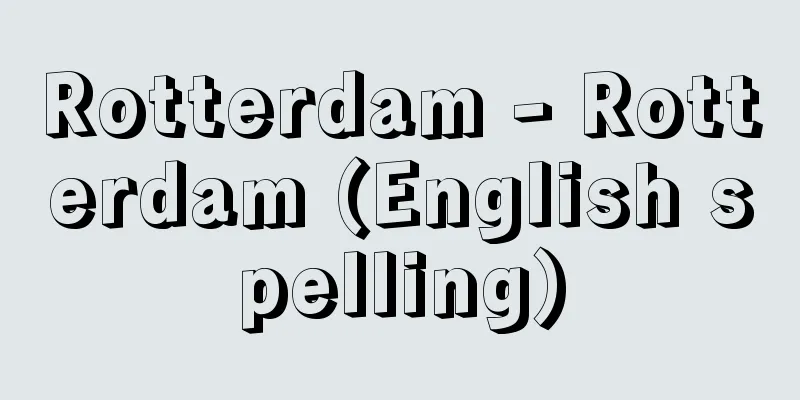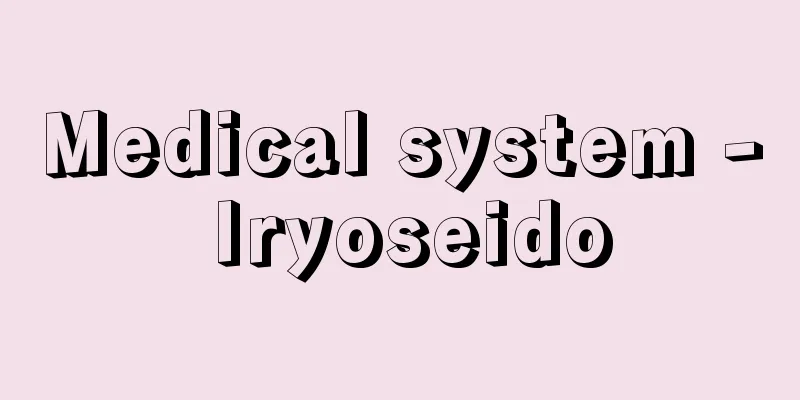Rotterdam - Rotterdam (English spelling)

|
It is an international port and commercial city in the southwest of the Netherlands, in the province of South Holland. Its name comes from a dam on the Rotte River, which runs through the north of the city. Its population was 595,255 (2001), second only to the capital Amsterdam, and the metropolitan area population was 989,956 (2000). The city is formed on both the north and south banks of the New Maas, which is a branch of the Rhine and Maas, and is located about 30 kilometers upstream from the mouth of the North Sea. Since the "new waterway" Nieuwe Waterweg was opened between the city and the North Sea in the late 19th century, ocean-going ships were able to sail upstream, and the port has grown rapidly. It is connected to the Ruhr industrial region in Germany, Belgium, France, and Switzerland through inland waterways of the Rhine and Maas systems, and is an important transit and transshipment port with a vast hinterland. It has a container base and pipelines that extend to the cities of Amsterdam, Cologne, and Vruij (Belgium). In particular, Europoort, which was constructed as an outer port from 1958, has developed as the gateway to the European Community, and as a result, the Port of Rotterdam surpassed New York in 1965 to become the world's largest trading port. Even today, transit trade is thriving as a gateway to the EU (European Union). Industry is also thriving, and in addition to the traditional shipbuilding and food (cocoa, coffee, tobacco) industries, huge petrochemical complexes have been developed on the south bank of the New Maas River and at Europoort. The city center was completely destroyed by German bombing in 1940 and has few historical buildings, but the 15th century Church of St. Lawrence and the Boijmans Museum, famous for its collection of Dutch paintings, remain. After World War II, the center was redeveloped, and the number of houses was reduced to about one-quarter (6,000) of the prewar number through land readjustment. In addition, the large pedestrianized shopping center Lijnbaan, the Doeren Congress Center, and the Central Station were built. The 117-meter-tall Euromast stands on the banks of the New Maas River, and the north and south banks are connected by road tunnels and subways. It is the birthplace of the humanities scholar Erasmus, and is home to Erasmus University, which was integrated in 1973 with the business school at its core. [Takaharu Hasegawa] historyA dam was built in the 13th century, and in 1340 the Count of Holland granted the city autonomy and also authorized the construction of a canal. In 1488 the Count of Brederode occupied it and took the surrounding villages. In 1563 most of the city was burned, and in 1572 it was plundered by Spanish troops. Later, the harbor was developed by digging up the mud that had accumulated in the bed of the Rotte River, and the riverbanks were built with that mud, which became the basis for later development. In the 17th century after the Dutch War of Independence (1568-1648), it prospered as a central port for trade with France and England, and sent ships as far as America and Indochina. With the abolition of the Royal Decree of Nantes in 1685, many French Huguenots (Protestants) fled to this area. After the stagnation period under Napoleon I, in the second half of the 19th century, with the industrialization of the Rhineland and the Ruhr and the construction of the "New Waterway", it became a major trading port. [Isomi Tatsunori] [References] |Source: Shogakukan Encyclopedia Nipponica About Encyclopedia Nipponica Information | Legend |
|
オランダ南西部、ゾイト・ホラント州にある国際的な港湾・商工業都市。地名は市の北部を流れるロッテ川のダム(堰堤(えんてい))に由来する。人口は59万5255(2001)で首都アムステルダムに次ぎ、都市圏人口は98万9956(2000)。ライン川、マース川の分流である新マース川の南北両岸にまたがって市街は形成され、北海河口から約30キロメートル上流に位置する。19世紀後半に北海との間に「新水路」Nieuwe Waterwegが開削されてから外洋船の遡航(そこう)が可能となり、港湾は急速に成長した。ライン川、マース川水系の内陸水路を通じてドイツのルール工業地帯やベルギー、フランス、スイスと結ばれ、広大な後背地を有する中継港、積換え港として重要で、コンテナ基地があるほか、パイプラインがアムステルダム、ケルン、フリュイ(ベルギー)の諸都市へ延びている。とくに1958年より外港として建設されたユーロポートEuropoortは、ヨーロッパ共同体の玄関として発展し、このためロッテルダム港は65年にニューヨークを抜いて世界最大の貿易港へと躍進した。現在もEU(ヨーロッパ連合)の門戸として中継貿易が盛んである。工業も活発で、従来の造船、食品(ココア、コーヒー、たばこ)に加え、新マース川南岸やユーロポートには巨大な石油化学コンビナートが展開している。 市街中心部は、1940年のドイツ軍の爆撃で完全に破壊されたため歴史的建造物に乏しいが、15世紀の聖ローレンス教会や、オランダ絵画の収集で有名なボイマンス博物館などが残っている。第二次世界大戦後は中心部の再開発が行われ、区画整理によって住宅数は戦前の約4分の1(6000戸)に減少したほか、歩行者天国の大ショッピングセンターであるラインバーンや、ドゥーレン会議場、中央駅などが建設された。新マース川河畔には高さ117メートルのユーロマストがそびえ、南北両岸地区は道路トンネル、地下鉄で結ばれる。人文学者エラスムスの生地で、商科大学を核に1973年総合化されたエラスムス大学がある。 [長谷川孝治] 歴史13世紀にダムが築かれ、1340年にはホラント伯が自治権を与え、また運河建設を認可した。1488年ブレーデローデ伯が占領、周辺村落を奪った。1563年には市の大半が焼け、72年にはスペイン軍の略奪を受けた。その後、ロッテ川の河床に堆積(たいせき)した泥を掘って港を整備し、その泥を盛り土として河岸をつくったが、これは後世の発展の基礎となった。オランダ独立戦争(1568~1648)後の17世紀には、フランス、イギリスとの取引の中心港として繁栄し、アメリカ、インドシナにまで船を送った。1685年のナントの王令廃止で、フランスのユグノー(新教徒)が多数この地に亡命した。ナポレオン1世時代の停滞期が過ぎて19世紀後半には、ラインラントやルール地方の産業化に伴い、また「新水路」の建設により、大貿易港となった。 [磯見辰典] [参照項目] |出典 小学館 日本大百科全書(ニッポニカ)日本大百科全書(ニッポニカ)について 情報 | 凡例 |
Recommend
Pulex irritans (English name) Pulexirritans
...Host preference is not as strict as that of li...
Lying incense burner - Gajokukoro
...It has a chain and hook for attachment. It cor...
Drude, PKL (English spelling) DrudePKL
…In contrast to free electrons, electrons that ar...
Nagaibogumo (long-tailed spider) - Nagaibogumo (English spelling) two-tailed spider
A spider of the family Acanthidae. Females are 10m...
Right of resistance
The right of an individual or group to resist pub...
Microorganism(s)
Generally speaking, microorganisms are a collecti...
Homachi
It refers to the personal baggage of sailors used ...
Goose
…During this time, large-scale banking and wareho...
Temporary Tariff Measures Act
…These are the four main effects of tariffs, but ...
Lotella maximowiczi (English spelling) Lotella maximowiczi
…[Hibiya Kyo]. . . *Some of the terminology that ...
Turing Machine
It is a thinking calculating machine conceived by...
Voiced consonant - dakuon
In Japanese, voiced consonants are syllables (moi...
Sadness, sorrow
Grief is an emotion caused by a situation that is ...
Akiyamago
An isolated paradise located in the upper reaches...
Chemical plating - Kagaku plating
In contrast to electroplating, which is the mainst...









